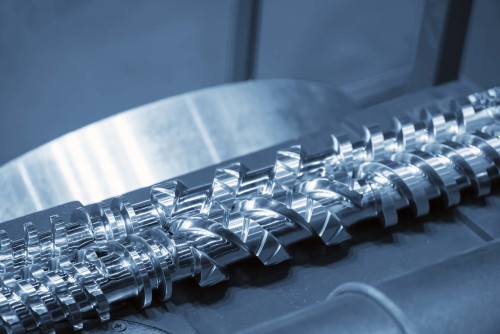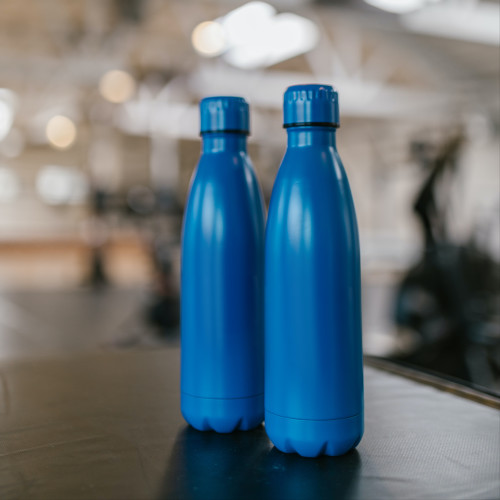Injection Stretch Blow Moulding
Injection Stretch Blow Moulding is a process very similar to Injection Blow moulding where a preform is injection moulded for precision of neck rim and screw thread before being blown into the final bottle shape. The difference wth Injection Stretch Blow moulding is that taller bottles can be made by stretching the pre-form before introducing air pressure to blow the bottle to the final shape. Thus taller bottles can be made from a relatively short (but generally thicker walled) preform. Molten polymer flows into the injection cavity via the hot runner block, to produce the desired shape of the preform with a mandrel (the core pin) producing the inner diameter and the injection cavity the outer. After a set time the injection moulds and core pins part and the preform held in a neck carrier is rotated 90º.
Stretching and Blowing
Once conditioned to the correct temperature the preform is ready for stretching and blowing to the finished shape. Once the preform is within the blowmould area the moulds close, a stretch rod is introduced to stretch the preform longitudinally and using two levels of air pressure, the preform is blown circumferentially.
Discharge
After a set time for cooling the moulds open and the preform is removed via drop chutes or robotics. In practice the four stages are carried out concurrently using a revolving carousel of moulds.
Typical Materials Used:
Polyethylene (Low Density) LDPE, (LLDPE), Polypropylene (PP), Polyethylene - Terephthalate (PET), Polyvinyl chloride (PVC), Polyethylene (High Density) HDPE)
Typical Products Produced:
Carbonated and soft drink bottles, Cooking oil containers, Agrochemical containers, Health and oral hygiene products, and Bathroom and toiletry products












